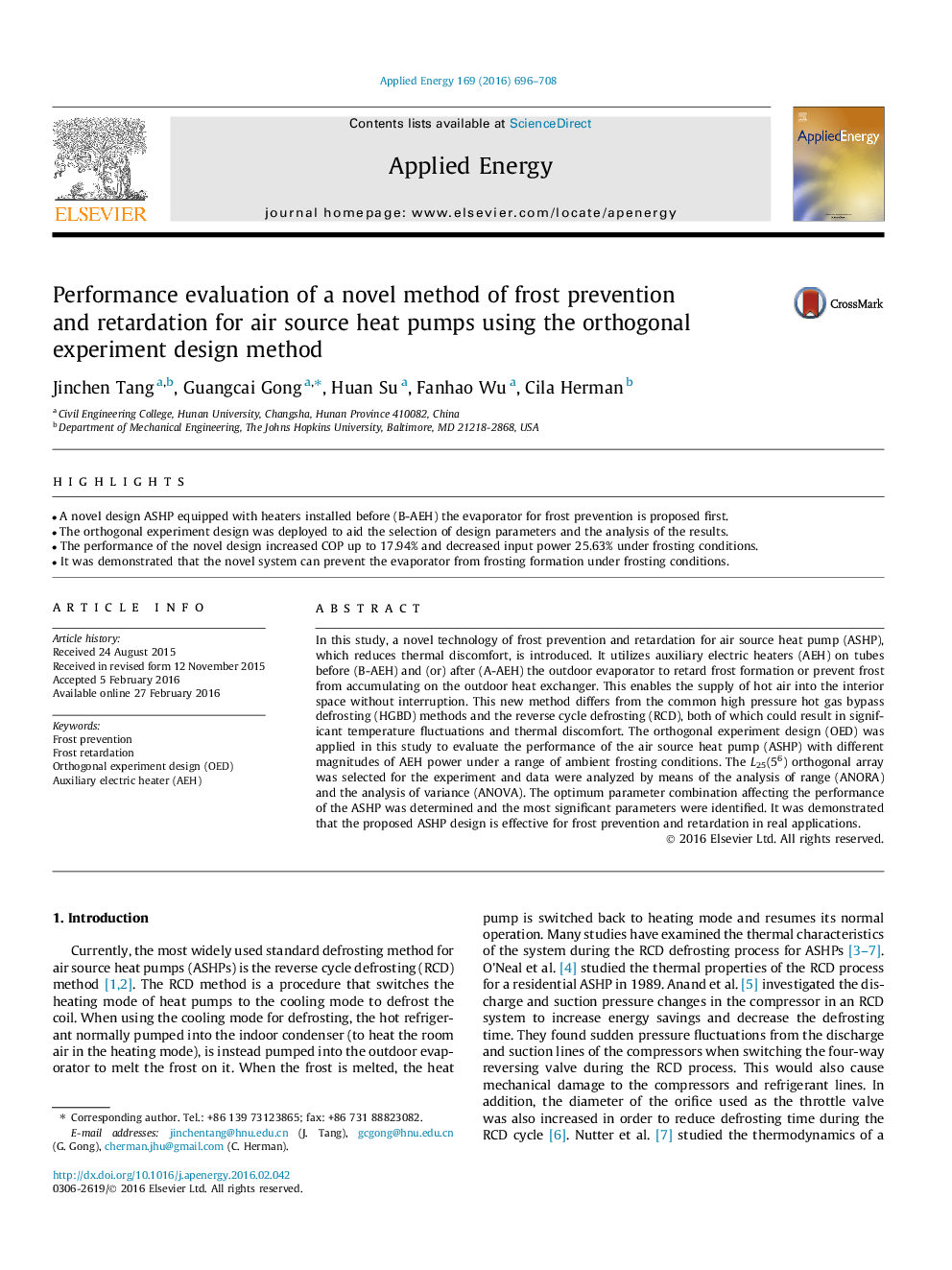| Article ID | Journal | Published Year | Pages | File Type |
|---|---|---|---|---|
| 6683610 | Applied Energy | 2016 | 13 Pages |
Abstract
In this study, a novel technology of frost prevention and retardation for air source heat pump (ASHP), which reduces thermal discomfort, is introduced. It utilizes auxiliary electric heaters (AEH) on tubes before (B-AEH) and (or) after (A-AEH) the outdoor evaporator to retard frost formation or prevent frost from accumulating on the outdoor heat exchanger. This enables the supply of hot air into the interior space without interruption. This new method differs from the common high pressure hot gas bypass defrosting (HGBD) methods and the reverse cycle defrosting (RCD), both of which could result in significant temperature fluctuations and thermal discomfort. The orthogonal experiment design (OED) was applied in this study to evaluate the performance of the air source heat pump (ASHP) with different magnitudes of AEH power under a range of ambient frosting conditions. The L25(56) orthogonal array was selected for the experiment and data were analyzed by means of the analysis of range (ANORA) and the analysis of variance (ANOVA). The optimum parameter combination affecting the performance of the ASHP was determined and the most significant parameters were identified. It was demonstrated that the proposed ASHP design is effective for frost prevention and retardation in real applications.
Keywords
Related Topics
Physical Sciences and Engineering
Energy
Energy Engineering and Power Technology
Authors
Jinchen Tang, Guangcai Gong, Huan Su, Fanhao Wu, Cila Herman,
